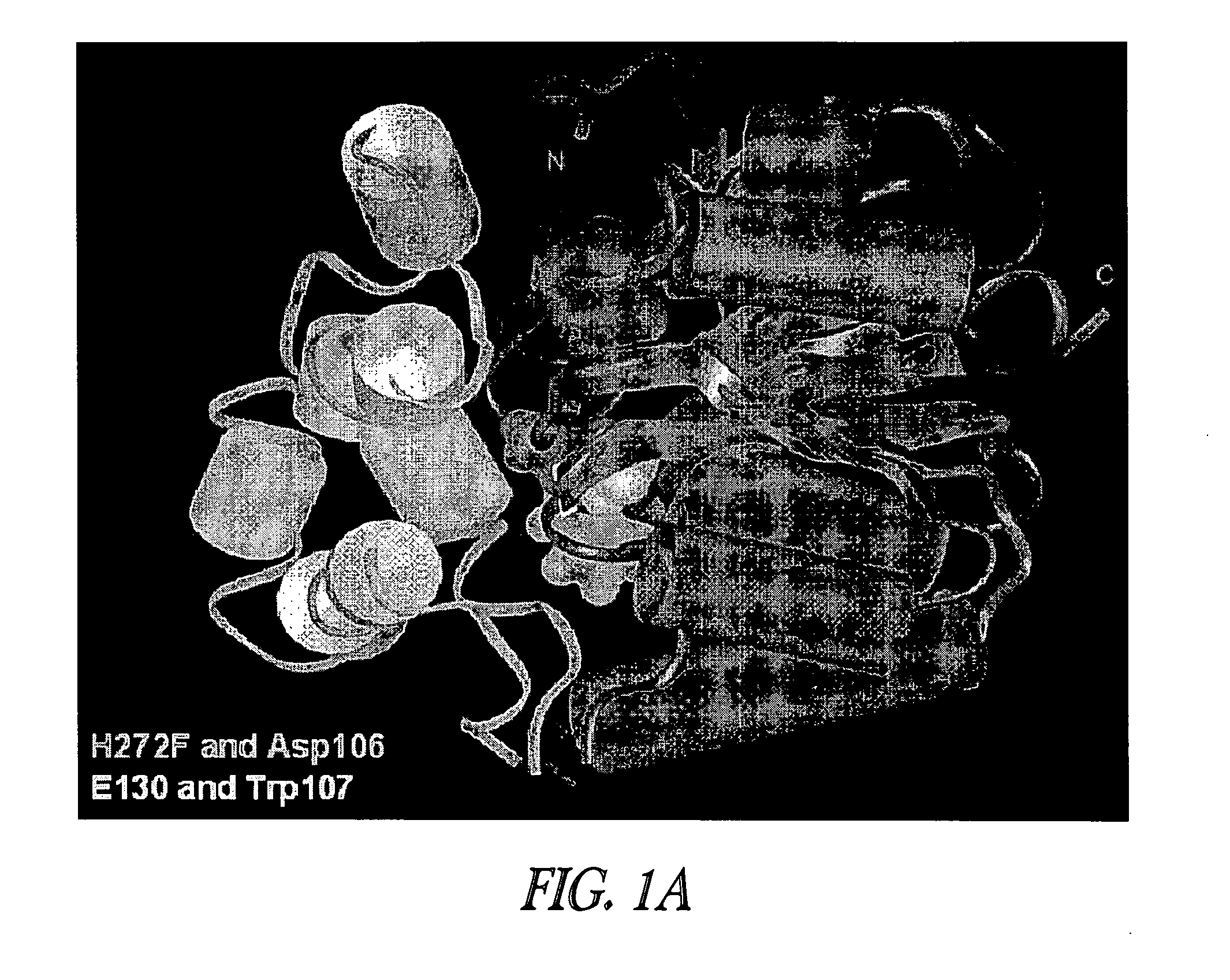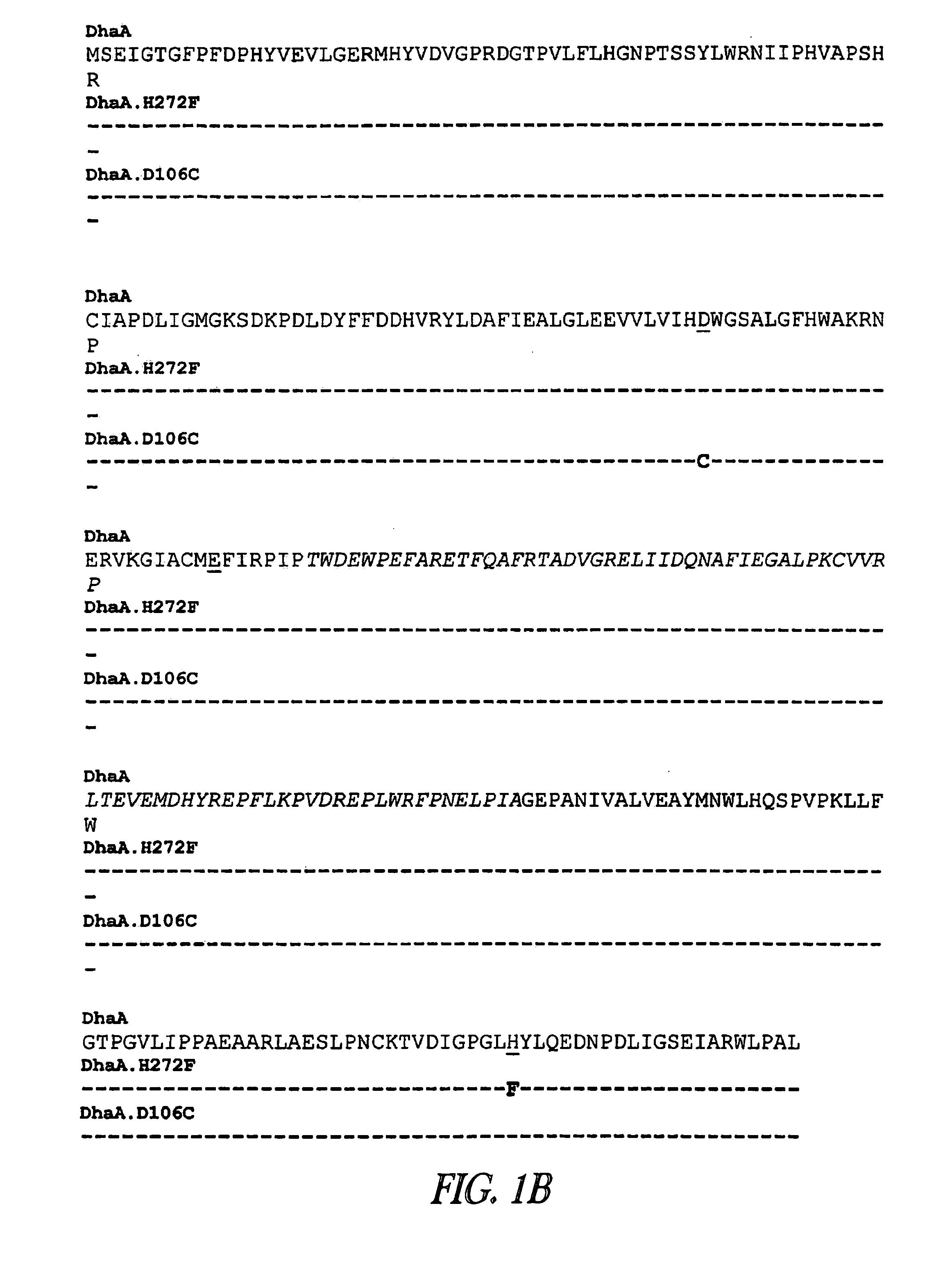Mutant hydrolase proteins with enhanced kinetics and functional expression
a technology of which is applied in the field of mutant hydrolase proteins with enhanced kinetics and functional expression, can solve the problems of less than optimal in vitro applications, and achieve the effects of improving fluorescence polarization (fp) signal, improving functional expression, and enhancing protein production
- Summary
- Abstract
- Description
- Claims
- Application Information
AI Technical Summary
Benefits of technology
Problems solved by technology
Method used
Image
Examples
example 1
[0193]In the absence of a fusion partner, expression of HT2 in E. coli or cell free systems was robust. However, when fused to another gene, production of soluble and functional HT2 was lower, possibly due to structural incompatibility between the two components of the fusion. In general, the problem was more pronounced when HT2 was the C-terminal component of a fusion. To improve the structural compatibility between mutant hydrolases such as mutant dehalogenases with a substitution at a position corresponding to position 272 in SEQ ID NO:1, and a fusion partner, and to improve the relative labeling kinetics for hydrolase substrates other than those with a TMR functional group, an evolution process was employed. The FAM ligand was used in screens for further optimized mutant DhaAs, with the intention that some of the mutations identified would provide improved FAM ligand kinetics. Candidates were then examined with the TMR ligand to ensure that the mutations did not substantiate alt...
example 2
[0209]The V6 sequence was used as a template for mutagenesis at the C-terminus. A library of mutants was prepared containing random, two-residue extensions (tails) in the context of an Id-V6 fusion (V6 is the C-terminal partner), and screened with the FAM ligand. Mutants with improved protein production and less non-specific cleavage (as determined by TMR ligand labeling and gel analysis) were identified. The two C-terminal residues in DhaA 2.6 (“V6”) were replaced with Glu-Ile-Ser-Gly to yield V7 (FIG. 8). The expression of V7 was compared to V6 as both an N- and C-terminal fusion to Id. Fusions were overexpressed in E. coli and labeled to completion with 10 μM TMR ligand, then resolved by SDS-PAGE+fluorimaging (FIG. 6). The data shows that more functional fusion protein was made from the V7 sequence. In addition, labeling kinetics with a FAM ligand over time for V7 were similar to that for V6 (FIG. 6), although V7 had faster kinetics than V6 when purified nonfused protein was test...
PUM
| Property | Measurement | Unit |
|---|---|---|
| Fraction | aaaaa | aaaaa |
| Fraction | aaaaa | aaaaa |
| Fraction | aaaaa | aaaaa |
Abstract
Description
Claims
Application Information
 Login to View More
Login to View More - R&D
- Intellectual Property
- Life Sciences
- Materials
- Tech Scout
- Unparalleled Data Quality
- Higher Quality Content
- 60% Fewer Hallucinations
Browse by: Latest US Patents, China's latest patents, Technical Efficacy Thesaurus, Application Domain, Technology Topic, Popular Technical Reports.
© 2025 PatSnap. All rights reserved.Legal|Privacy policy|Modern Slavery Act Transparency Statement|Sitemap|About US| Contact US: help@patsnap.com



